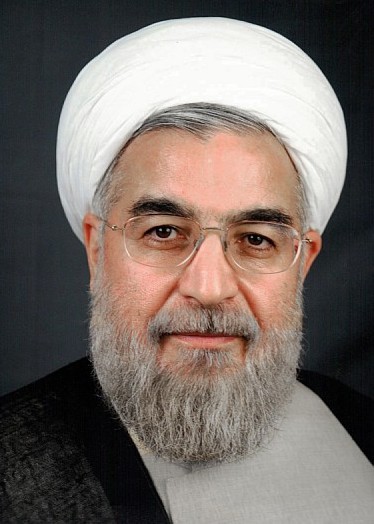The result of the elections for the Iranian parliament and Assembly of Experts marks a shift in the political situation of the country. Under the pressure of the masses the regime is changin its direction, but this will only lead to a new period of instability and an upturn in the class struggle.
Last Friday, Iranians went to the polls to vote in elections for the Iranian parliament (Majles) and the Assembly of Experts. 34 million people, 62 percent of the electorate, participated.
Of course the elections were far from democratic by any measure. While no workers’ organisations or other real mass parties are allowed to exist, let alone run for elections, even the soft - Liberal leaning - wing of the established political set-up, the Reformists and Moderates, have been harassed to an extraordinary extent and all but 30 of their candidates were initially barred from running. It was only thanks to immense pressure and protests by the Reformist and Moderate factions that 200 of their candidates, mainly unknown people, were allowed to run. This also meant that many of the 290 seats were left uncontested, allowing Conservative factions, known as Principlist, shoo-in victories.
Nevertheless, as the results have trickled in throughout the week, a picture has emerged of a dramatic shift in the balance of forces within these key institutions of the state.
With the names of 222 of the 290 MPs announced, the candidates of the Reformist and Moderate factions, who have been running unified campaigns, seem to have secured 70 to 80 seats, up from 20-30 in the previous term. The Principlist faction, in particular its hardline grouping, had their almost total domination of the Majles (around 270 MPs) wrecked, leaving them with around the same amount of MPs as their opponents. An unprecedented number of seats, 60, went to independents who are expected to more sympathetic to the Moderate and Reformist factions. A further 68 seats are going on to a second round of voting in April.
The result leaves all factions unable to take a decisive majority or to secure the two-thirds majority needed to reach quorum - a fact which can be used to block legislation by a minority. This potential paralysis will probably lead to greater clashes between the factions in the future and add to the general political instability of of the regime.
In spite of the formal ‘tie’, the Reformists were seen as the main winners of elections. In Tehran the Reformist and Moderate-backed List of Hope, won every single seat of the 30 parliamentary seats allocated to the city. Gholam-Ali Haddad-Adel, the spokesperson of the Principlist faction in the present parliament came in as number 31 thus leaving him with no seat in the next parliament.
The elections for the Assembly had even more dramatic consequences. In Tehran the Reformist and Moderate list won 15 out of 16 of the seats including, for the first time in the history of the Islamic Republic, a non-clerical candidate: Mohsen Esmaili. The former president Akbar Hashemi Rafsanjani, one of the shrewdest political minds of the regime who has been pushed aside by the hardliners for the past 10 years and who was not even allowed to run for president in 2013, won the most votes of any candidate with a record 2.3 million cast in his favour. President Hassan Rouhani, a close ally of Rafsanjani, came in at third place.
Setback for hardliners
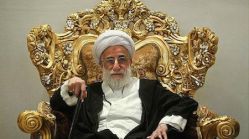 Ahmad JannatiMeanwhile the hardline Principlists saw all but one of their most prominent representatives expelled from the Assembly by the voters. In Tehran two ultra-conservative ayatollahs, Mohammad-Taghi Mesbah Yazdi and Mohammad Yazdi (who is the present chairman of the Assembly), lost their seats. Ahmad Jannati, the last remaining prominent hardliner, was elected for the 16th and last seat of the Tehran list. This was a humiliating result for Jannati, who amongst his many key positions in the regime heads the Guardian Council which had barred thousands of Reformist candidates from running for election a few weeks earlier.
Ahmad JannatiMeanwhile the hardline Principlists saw all but one of their most prominent representatives expelled from the Assembly by the voters. In Tehran two ultra-conservative ayatollahs, Mohammad-Taghi Mesbah Yazdi and Mohammad Yazdi (who is the present chairman of the Assembly), lost their seats. Ahmad Jannati, the last remaining prominent hardliner, was elected for the 16th and last seat of the Tehran list. This was a humiliating result for Jannati, who amongst his many key positions in the regime heads the Guardian Council which had barred thousands of Reformist candidates from running for election a few weeks earlier.
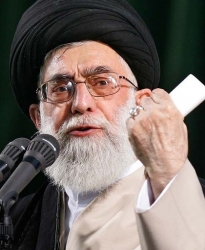 Ali KhameneiIn spite of the attempts to block the Reformists and Moderates and despite strong suspicions of several cases of foul play at the polls, the results for the Assembly have shifted the political balance dramatically, leaving the hardliners with only 31 guaranteed votes in the 88 member body. This will be significant because the likelihood is that this Assembly, during its eight year term, will be called upon to fulfill its main responsibility of selecting a new Supreme Leader, after the likely death of 76 year-old Ali Khamenei in the near future.
Ali KhameneiIn spite of the attempts to block the Reformists and Moderates and despite strong suspicions of several cases of foul play at the polls, the results for the Assembly have shifted the political balance dramatically, leaving the hardliners with only 31 guaranteed votes in the 88 member body. This will be significant because the likelihood is that this Assembly, during its eight year term, will be called upon to fulfill its main responsibility of selecting a new Supreme Leader, after the likely death of 76 year-old Ali Khamenei in the near future.
The result marks a heavy blow to the hardliners who have lost their absolute control over the two key institutions: the parliament and the Assembly. These people are seen as the most reactionary, crude and anti-democratic elements within the regime, and the vote was seen as a rare opportunity for many to express their anger and desire for change. The hardliners’ attempts to bar any reformist-minded candidates from running in the election only reinforced this sentiment.
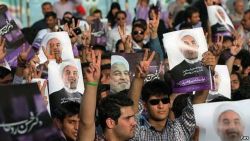 Rouhani's election campaign was flooded by youthThe Moderates and Reformists however, who for the time being have, to all intents and purposes, merged, managed to tap into the popular mood and channel the deep desire for change which exists throughout Iranian society. President Hassan Rouhani was elected on the basis of a programme for democratic rights and to end the economic siege of Iran. So far he has fulfilled one of his promises and the main obstacle for his path of granting democratic rights have been the hardline factions which have dominated parliament and other levers of power.
Rouhani's election campaign was flooded by youthThe Moderates and Reformists however, who for the time being have, to all intents and purposes, merged, managed to tap into the popular mood and channel the deep desire for change which exists throughout Iranian society. President Hassan Rouhani was elected on the basis of a programme for democratic rights and to end the economic siege of Iran. So far he has fulfilled one of his promises and the main obstacle for his path of granting democratic rights have been the hardline factions which have dominated parliament and other levers of power.
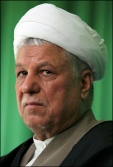 Akbar RafsanjaniAfter the hardliners blocked thousands of Reformists from running in most recent elections, including the grandson of Ayatollah Khomeini, Hashemi Rafsanjani and other prominent Moderates made unprecedented public criticisms of them. Addressing the powerful Guardian Council, which vets all candidates, Rafsanjani asked, “Where did you receive your qualification? Who qualified you? Who gave you permission to judge? Who gave you the authority, the right to take all the guns, have all the platforms, Friday prayer platforms, and run state radio and television?” This delicately timed and executed public attack, no doubt made an impression with many of those who are resentful of the lack of democracy.
Akbar RafsanjaniAfter the hardliners blocked thousands of Reformists from running in most recent elections, including the grandson of Ayatollah Khomeini, Hashemi Rafsanjani and other prominent Moderates made unprecedented public criticisms of them. Addressing the powerful Guardian Council, which vets all candidates, Rafsanjani asked, “Where did you receive your qualification? Who qualified you? Who gave you permission to judge? Who gave you the authority, the right to take all the guns, have all the platforms, Friday prayer platforms, and run state radio and television?” This delicately timed and executed public attack, no doubt made an impression with many of those who are resentful of the lack of democracy.
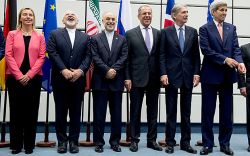 Iranian foreign minister with his western counterparts after signing the nuclear dealThe election result reflected the echo that this democratic rhetoric received amongst wide layers of the population. It also also indicates a relatively high level of support for the Rouhani administration; in particular due to the the nuclear deal his administration reached with the West, which in turn led to the lifting of the devastating Western imposed sanctions. Here again the hardliners were on the wrong side of the opinion of the masses - they were seen as being against the deal which ended the economic siege of the country.
Iranian foreign minister with his western counterparts after signing the nuclear dealThe election result reflected the echo that this democratic rhetoric received amongst wide layers of the population. It also also indicates a relatively high level of support for the Rouhani administration; in particular due to the the nuclear deal his administration reached with the West, which in turn led to the lifting of the devastating Western imposed sanctions. Here again the hardliners were on the wrong side of the opinion of the masses - they were seen as being against the deal which ended the economic siege of the country.
The crumbling base of the regime
In spite of the relative calm on the surface, the contradictions in Iranian society are very tense. The regime which once relied on the support of a hardcore of believers is seeing its legitimacy eroded by the day. The image of the religious purity of the theocracy is stained by years of openly corrupt rule and an endless series of scandals. The new generation of the ruling class and the regime, who did not participate in the revolution, are even less tied to its ideals. This leaves many previously ardent supporters of the regime questioning their support.
On the other hand opposition has been rising as the conditions of all layers of society have deteriorated. The working class has seen its conditions crushed and its living conditions worsened every year. The vast majority of workers today work on “blank contracts” which do not give them any rights. The double and triple digit inflation has consistently been 10-20 higher than rises in the minimum wage. At the same time huge layers of middle class people have been ruined by the spiralling inflation and crisis in the economy. Meanwhile the youth are tired of being suffocated by obscure and arbitrary laws, supposedly based on Islam, which only serve to obstruct every aspect of their lives.
All of these contradictions were behind the 2009 Green movement which brought the regime to the brink of collapse. While that movement was partially defeated, the contradictions found an expression again in the election of Hassan Rouhani, whose election campaign became a focal point of all the pent up rage and anger, particularly amongst the youth. In effect Rouhani’s election came on the back of a mass movement which shook every part of the establishment.
Seeing the fate of the Mubarak regime in Egypt and the Ben Ali regime in Tunisia, a section of the Iranian ruling class realises that it needs to gradually open up in order to allow for some sort of democratic participation. The Moderate faction, led by the likes of Rouhani and Rafsanjani are part of this trend. Although Iranian politics is not party-based and loyalties float between different factions, the Moderates are generally quite close to the Bazaar - ie. the big traders - and much of non-state based big business. They have formed core parts of the regime throughout its history. Their close collaboration and near-fusion with the Reformists, who are more akin to liberal-democrats, is an indication of a shift in a significant part of the ruling class towards opening up the internal atmosphere.
An opening up, however, also means the decimation of clerical rule over the state, the law and social life. This antagonises the more conservative elements of the regime. They argue that the best way to avoid losing control over the situation is to increase crackdowns and the intervention of the state in society. During the first Reformist administration in the 1990s they could see how Khatami’s meagre reforms led to large student and workers’ movements. They also saw how Mirhossein Mousavi became the focal point of the Green movement in 2009. Thus they see complete crackdown as the only way to avoid losing control over the situation.
The Supreme Leader, Ali Khamenei, is caught between the two factions. While his position is essentially based on clerical rule, he is forced to accept a certain level of openness to avert a social explosion. Seeing the waning legitimacy of the regime, in particular after the 2009 movement which was sparked by large scale electoral ‘engineering’, he has pushed for more competition in the elections and has encouraged all Iranians “including those who are against the Islamic Republic” to participate in them. He tries to claim legitimacy for his rule by standing as the neutral father of the nation overseeing the flourishing Islamic Democracy. However, every democratic crack which is opened contrasts his own authoritarianism with the democratic aspirations of the masses. By trying to take the democratic movement in effect, he will undermine his own position even more.
Thus, with its ongoing decay and under the pressure of the the constant threat of a mass movement, the regime is nudged in the direction of normal bourgeois democratic rule. This of course does not mean that there is democracy or that it will be announced tomorrow, but that the regime is being nudged in that direction by the objective situation.
This is also reflected in a change in the general rhetoric of the regime, which is less religious and increasingly nationalist and anti-sectarian in character. In the past week’s elections, even the most hard-line conservatives had to rely on economic and social demands to head their campaigns. While the slogan of the Reformist/Moderates was “Hope, calm and economic development” the slogan of the Principlists was: “Livelihood, security and progress”. Vague and idealist as they were, religion had no major place in the programmes of either faction. Seeking to involve the masses and thus legitimise their rule, the regime is can no longer base itself on the religious rhetoric that it used to in the past. This is a part of a long term process which has seen the decline of religious rhetoric in the face of rising nationalist Iranian rhetoric.
This trend has also been strengthened by the foreign policy of Iran and its interventions in Iraq, Syria, Lebanon and beyond. In all areas it is basing itself on minority Shia groups and therefore has to present an increasingly anti-sectarian and even democratic character in order to gain the backing of other groups. In the struggle against the Islamic State and other Jihadist groups in the Middle East, Iranian-backed groups have presented themselves as anti-extremists and anti-sectarians more than they have been raising the flag of Shia Islam and anti-Sunnism.
This has had a profound impact on the Revolutionary Guards which leads and organises the military interventions of Iran in the region. Although they are still mainly backing the hardline factions, there might be signs of an impending shift or at least a tacit acceptance of the general development of the regime. Qassem Suleimani, the notorious commander of the Quds forces and one of the most prominent guards, was seen weeks before the elections to endorse Ali Larijani who is close to the Rouhani camp. The same rhetoric of defence of civilisation, plurality and peaceful coexistence of all peoples has also been put forward to justify those interventions inside Iran itself.
Ruling class changing course
While the Moderates have joined the Reformists in calling for reforms - albeit “moderate” ones! - the present elections also reflect a wider shift in the more conservative parts of the ruling class. A large number of Moderate Principlists have been shifting camps lining up behind Rafsanjani and Rouhani.
The powerful Principlist Ali Larijani, who is the speaker of parliament, has been de facto running in tandem with the president's list. Ali Motahari, a previously outspoken critic of the Green movement, ran his own list called “Voice of the Nation”, but also appeared on the Reformist list. Besides on most major issues he has been on the side of the Reformists for a while. Over the past 2 years he has been very vocal in calling for the freeing of the Green Movement leaders, Mirhossein Mousavi and Mehdi Karroubi, who are under house arrest. For this he has been attacked, even physically, on several occasions.
Other conservatives such as Kazem Jalali and Behrouz Nemati, who took strong stands during the 2009 protests and called for the heaviest punishment for the opposition leaders, stood on the Reformist list in Tehran. Former intelligence ministers Ghorban Ali Dorri Najafabadi and Mohammad Reyshahri, who have been heavily involved in mass executions and assassinations of the post-war period, were on the Reformist list for the Assembly in Tehran. In Khuzestan, Ali Fallahian was another former intelligence minister to run on a Reformist list. These people do not necessarily identify with the full Reformist programme, but their actions are a clear indication as to which general direction the main layers of the ruling class are looking.
Regime crisis
“The most dangerous moment for a bad government is when it begins to reform.”
- Alexis de Tocqueville
In spite of all regimes’ attempts to bar the independent organisation and movement of the masses, the contradictions which have been piling up under the surface are moving towards a critical stage. In 2009 this led to an uprising which could have overthrown the regime, had it had a leadership and programme to mobilise the working class.
That movement was defeated by heavy repression, but the contradictions didn’t disappear. In fact, the legitimacy of the regime was lower than ever. Seeing the relative inefficiency of outright oppression and the inevitable re-emergence of mass protest movements, a part of the regime is attempting to open up gradually. By taking matters into their own hands and moving towards some kind of bourgeois democracy, they are trying to avoid losing control over the situation.
However, every step of opening up will only embolden the masses to demand more. The lifting of the sanctions on Iran and the relative economic growth that it will bring will add to this process. The economic siege imposed by the West gave the regime a chance to rally the population behind it against the foreign threat. It could dampen opposition and attack living standards without taking responsibility for it. Those days are over however. The “great satan” has become a de facto ally in the region and the economy is set to see high growth rates for the next few years.
This will spur forward the workers to demand to be paid back what they sacrificed during the previous period. This will in turn pit them against the ruling class which would like to suppress wages and costs in order to compete on the world market. This rising class struggle will push the working class to use every legal avenue it can and to push for more democratic rights. The economic struggles of the workers would quickly develop into political struggles for democratic rights and against dictatorship. The divisions in the ruling class would add to this development which would in turn deepen the divisions. This process has been held back and prolonged by the nuclear negotiations and the 2009 defeat. Now however, a new period is opening up with higher instability and fiercer class struggle than 2009. These elections were the first signs of this period, but they will not be the last.

